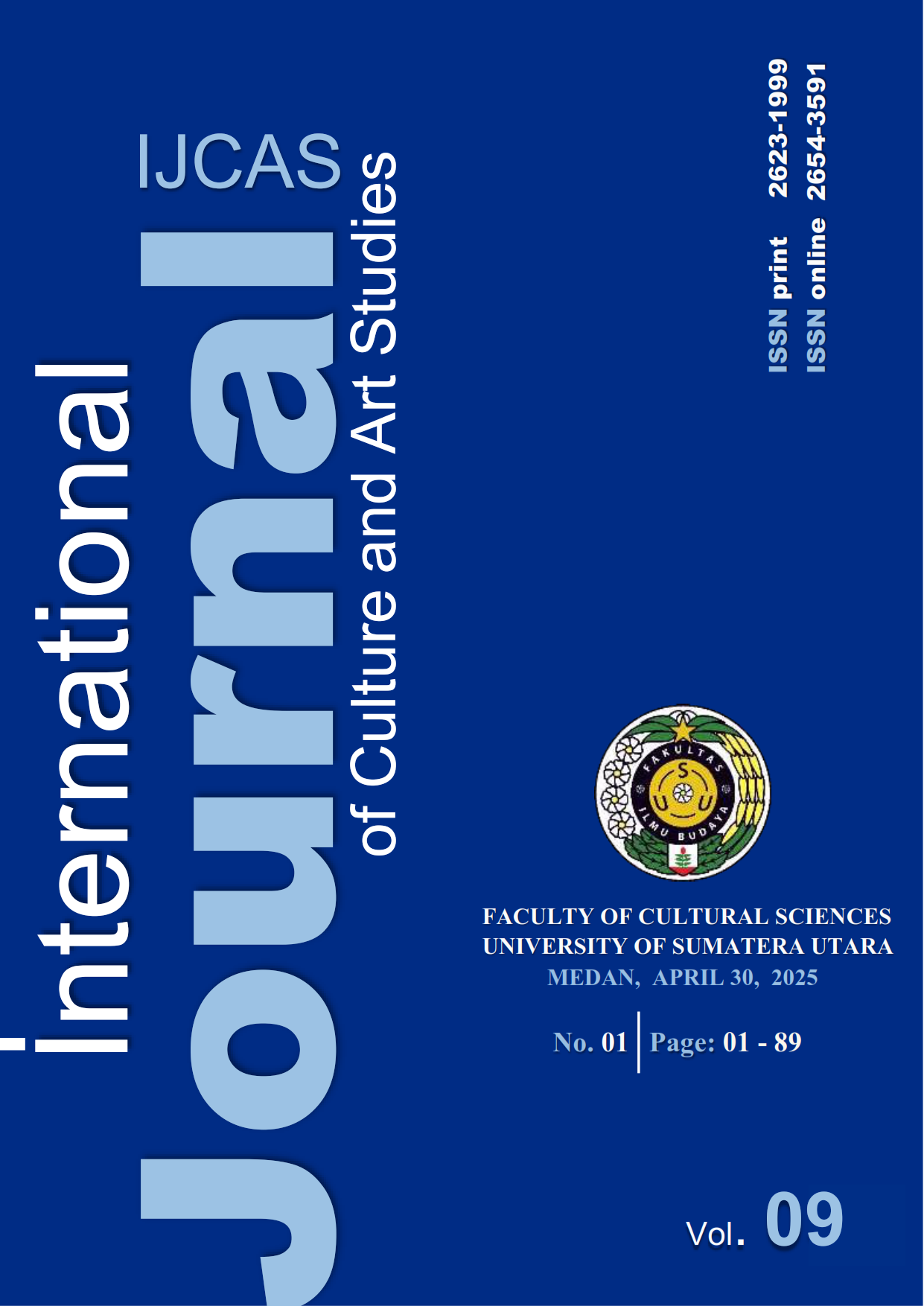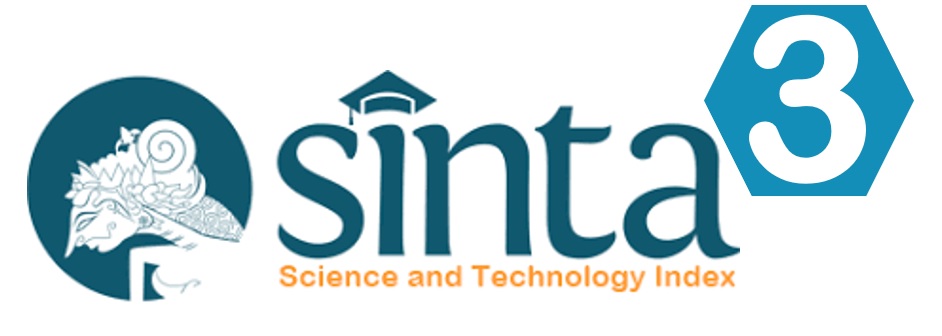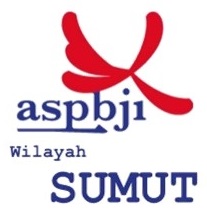Translanguaging in Religious Speech: Practices, Evaluation, and Perception
DOI:
https://doi.org/10.32734/ijcas.v9i1.20146Keywords:
Translanguaging, Religious Speech, Practice, Evaluation, PerceptionAbstract
Few studies have examined translanguaging's uses in preaching, which is the field of religious communication, even though it has been widely studied in educational communication. The study aims to characterize, evaluate, and perceive the translanguaging practices in Sunday sermons using Simalungun, a traditional language in North Sumatra Province. The study used a descriptive qualitative method with a survey design. Sixty priests participated in the study as participants selected by using a purposive sampling technique. Simalungun language was chosen as the language of sermon delivery, and the research instrument was the Google Form platform. This study found that motivation to employ translanguaging is crucial for effective sermon delivery and understanding. This study examines the reasons for priests' use of translanguaging, including the predominant preaching genre, the language used, challenges encountered, and congregational perceptions. The findings of this study provide a comprehensive account of translanguaging in Simalungun sermons, perceptions of the translanguaging practices, and better comprehension of messages in the sermon as implications of the study. The study suggests that additional research on the content of preaching in Sunday sermons be conducted using various analytical methodologies.
Downloads
References
Alasmari, M., Qasem, F., Ahmed, R., & Alrayes, M. (2022). Bilingual teachers’ translanguaging practices and ideologies in online classrooms in Saudi Arabia. Heliyon, 8(9), e10537. https://doi.org/10.1016/j.heliyon.2022.e10537
Carrell, L. (2009). Communication training for clergy: Exploring the impact on the transformative quality of sermon communication. Communication Education, 58(1), 15–34. https://doi.org/10.1080/03634520802235528
Damanik, R., Rokhman, F., & Mardikantoro, H. B. (2020). The Lingual Unit of Batak Simalungun Traditional Wedding Ceremony in The Medan of Ethnolinguistic Study. Seloka: Jurnal Pendidikan Bahasa Dan Sastra Indonesia, 9(4), 18–27.
Fitriyani, L. R., Wijayanto, X. A., & Nurhajati, L. (2021). Batak Christian Congregations as Part of Self and Cultural Identity. Nusantara: An International Journal of Humanities and Social Science, 3(June), 1–14. https://doi.org/10.6936/NIJHSS.202106
Galante, A. (2020). Pedagogical translanguaging in a multilingual English program in Canada: Student and teacher perspectives of challenges. System, 92(May 2014), 102274. https://doi.org/10.1016/j.system.2020.102274
Girsang, M., & Sembiring, M. (2018). The Implementation of Culture and Literature Through Mambere Tungkot in Simalungun Batak and Mere Ciken in Karo Batak: The Local Wisdom Maintenance. KnE Social Sciences, 3(4), 512. https://doi.org/10.18502/kss.v3i4.1961
Gore, J., Toliver, J., Moore, M. A., Aycock, D., & Epps, F. (2022). A mixed-methods formative evaluation of a dementia-friendly congregation program for Black churches. International Journal of Environmental Research and Public Health, 19(8), 4498. https://doi.org/10.3390/ijerph19084498
Ho, J. W. Y. (2007). Code-mixing : Linguistic form and socio-cultural meaning Code-mixing : Linguistic Form. The International Journal of Language Society and Culture, 21. www.educ.utas.edu.au/users/tle/JOURNAL/
Ingram, M. (2023). A (dis)play on words: Emergent bilingual students’ use of verbal jocularity as a channel of the translanguaging corriente. Linguistics and Education, 74. https://doi.org/10.1016/j.linged.2023.101165
Itoi, K., & Mizukura, R. (2023). Experience of Japanese exchange students in EMI programs: benefits and issues of translanguaging. International Journal of Multilingualism, 12(1), 1–20. https://doi.org/10.1080/14790718.2023.2177652
Joo, S. J., Chik, A., & Djonov, E. (2024). “Church is like a mini Korea”: the potential of migrant religious organizations for promoting heritage language maintenance. Applied Linguistics Review, 15(4), 1717-1745. https://doi.org/10.1515/applirev-2022-0052
Lewis, G., Jones, B., & Baker, C. (2012). Translanguaging: Ueveloping its conceptualisation and contextualisation. Educational Research and Evaluation, 18(7), 655–670. https://doi.org/10.1080/13803611.2012.718490
Liu, Y., & Fang, F. (2022). Translanguaging Theory and Practice: How Stakeholders Perceive Translanguaging as a Practical Theory of Language. RELC Journal, 53(2), 391–399. https://doi.org/10.1177/0033688220939222
Lord, J. L. (2014). The Sunday Sermon: Liturgical Participation as Shared Authority. Studia Liturgica, 44(1–2), 262–276. https://doi.org/10.1177/00393207140441-225
Muary, R., & Nurwahyu, A. (n.d.). Tuan Guru Batak: A Phenomenon of Religion, Culture and Practical Politics. https://doi.org/10.29103/mspr.v%vi%i.12248
Muguruza, B., Cenoz, J., & Gorter, D. (2020). Implementing translanguaging pedagogies in an English medium instruction course. International Journal of Multilingualism, 20(2), 540–554. https://doi.org/10.1080/14790718.2020.1822848
Napitu, H., Gultom, S., Sinurat, A., Napitu, U., Simalungun, U., Sisingamangaraja Barat, J., Kapul, B., Sitalasari, K. S., Pematang Siantar, K., & Utara, S. (2023). Melestarikan Multikulturalisme Budaya Kesenian Simalungun Di Era Digitalisasi. Journal on Education, 05(04), 16327–16333.
Nguyen, T. T. T. (2019). Translanguaging as trans-identity: The case of ethnic minority students in Vietnam. Lingua, 222, 39–52. https://doi.org/10.1016/j.lingua.2019.02.010
Nurhayani, I., Hamamah, H., Ningrum, D. I., & Delijar, R. M. (2020). Looking into the Language Status of Osing with Contrastive Analysis of the Basic Vocabulary of Osing and Malang Javanese. PAROLE: Journal of Linguistics and Education, 10(2), 87–96. https://doi.org/10.14710/parole.v10i2.87-96
Pujiono, M., & Gapur, A. (2022). Code Mixing as a Strategy for Mastering Vocabulary for First-Year Students of the Japanese Study Program in Medan. In Proceeding of International Conference on Japanese Studies, Language and Education (Vol. 3, No. 1, pp. 44-48).
Rosowsky, A. (2019). Sacred language acquisition in superdiverse contexts. Linguistics and Education, 53. https://doi.org/10.1016/j.linged.2019.100751
Salisbury, E., & Hall, T. N. (n.d.). A Palm Sunday Sermon from.
Saragih, E., & Saragih, J. (2021). Priests’ communication practice and perception of code mixing in Sunday sermons. International Journal of Communication and Society, 3(2), 152–165. https://doi.org/10.31763/ijcs.v3i2.487
Saragih, H., Ridwan, M., & Adisaputera, A. (2020). Socio-cultural change influences the changes in the Simalungun religion. Asian Ethnicity, 1–19. https://doi.org/10.1080/14631369.2020.1792269
Saragih, H., Subhilhar, Harahap, H., & Purba, A. (2019). The struggle of Batak Simalungun for their identity in Church organization in Simalungun, Medan, Indonesia. Journal of Human Behavior in the Social Environment, 29(6), 693–704. https://doi.org/10.1080/10911359.2019.1590888
Sianturi, A., Simanullang, A., Risfa Sitohang, O., Debrianti Siringo-ringo, N., & Lubis, F. (2024). Meningkatkan Kepahaman Budaya: Menggali Makna Umpasa Dan Umpama Dalam Tradisi Simalungun. In Jurnal Multidisiplin Ilmu Bahasa (Vol. 3).
Sibarani, R. (2018). Batak Toba society’s local wisdom of cooperation in Toba Lake area: a linguistic anthropology study. International Journal of Human Rights in Healthcare, 11(1), 40–55. https://doi.org/10.1108/IJHRH-08-2017-0035
Siregar, I. (2022). Effective and Efficient Treatment of Regional Language Preservation Strategies in the Nusantara. Journal of Humanities and Social Sciences Studies, 4(2), 16–22. https://doi.org/10.32996/jhsss.2022.4.2.3
Sobkowiak, P. (2022). Translanguaging practices in the EFL classroom - the Polish context. Linguistics and Education, 69. https://doi.org/10.1016/j.linged.2022.101020
Sugiri, E., Sodiq, S., & Yusuf, A. (2019). The Use of Language Variation in Friday Prayer Sermon by the Congregations Social Stratification in East Java: A Sociolinguistics Study. 338(Prasasti), 135–139. https://doi.org/10.2991/prasasti-19.2019.21
Sunarti, L., & Fadeli, T. R. (2021). Preserving Javanese identity and cultural heritage in Malaysia. Cogent Arts and Humanities, 8(1). https://doi.org/10.1080/23311983.2021.1956068
Tai, K. W. H., & Wei, L. (2021). Co-Learning in Hong Kong English medium instruction mathematics secondary classrooms: a translanguaging perspective. Language and Education, 35(3), 241–267. https://doi.org/10.1080/09500782.2020.1837860
Uzum, B., Yazan, B., Zahrawi, S., Bouamer, S., & Malakaj, E. (2021). A comparative analysis of cultural representations in collegiate world language textbooks (Arabic, French, and German). Linguistics and Education, 61, 100901. https://doi.org/10.1016/J.LINGED.2020.100901
Wang, D. (2020). Studying Chinese language in higher education: The translanguaging reality through learners’ eyes. System, 95, 102394. https://doi.org/10.1016/j.system.2020.102394
Werkmann Horvat, A., Bolognesi, M., & Lahiri, A. (2021). Processing of literal and metaphorical meanings in polysemous verbs: An experiment and its methodological implications. Journal of Pragmatics, 171, 131–146. https://doi.org/10.1016/j.pragma.2020.10.007
Downloads
Published
How to Cite
Issue
Section
License
Copyright (c) 2025 Erikson Saragih, Ayesha Junaid, Haida Umiera Hashim, Abdul Gapur

This work is licensed under a Creative Commons Attribution-ShareAlike 4.0 International License.













